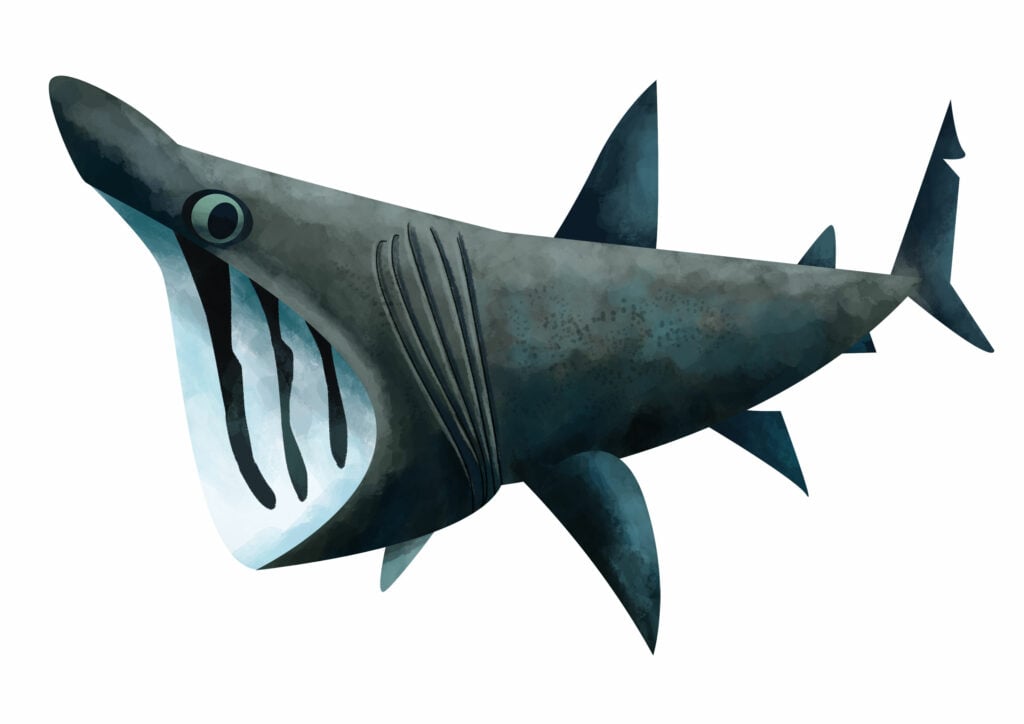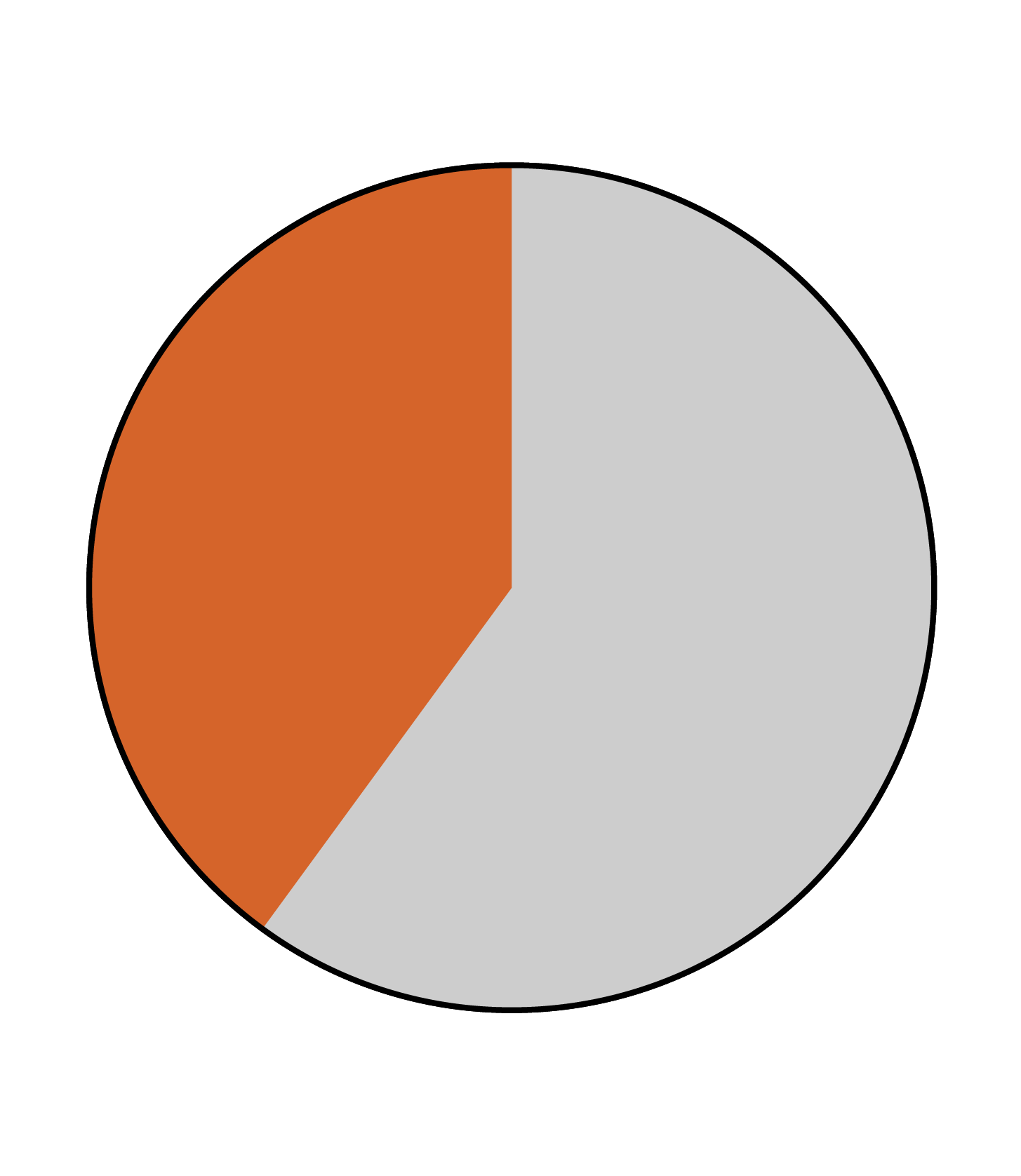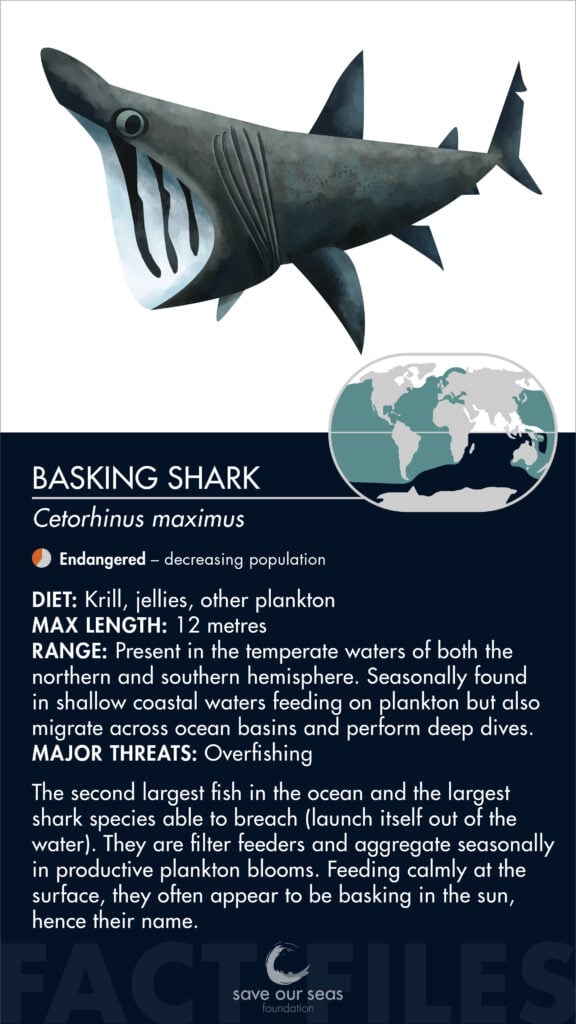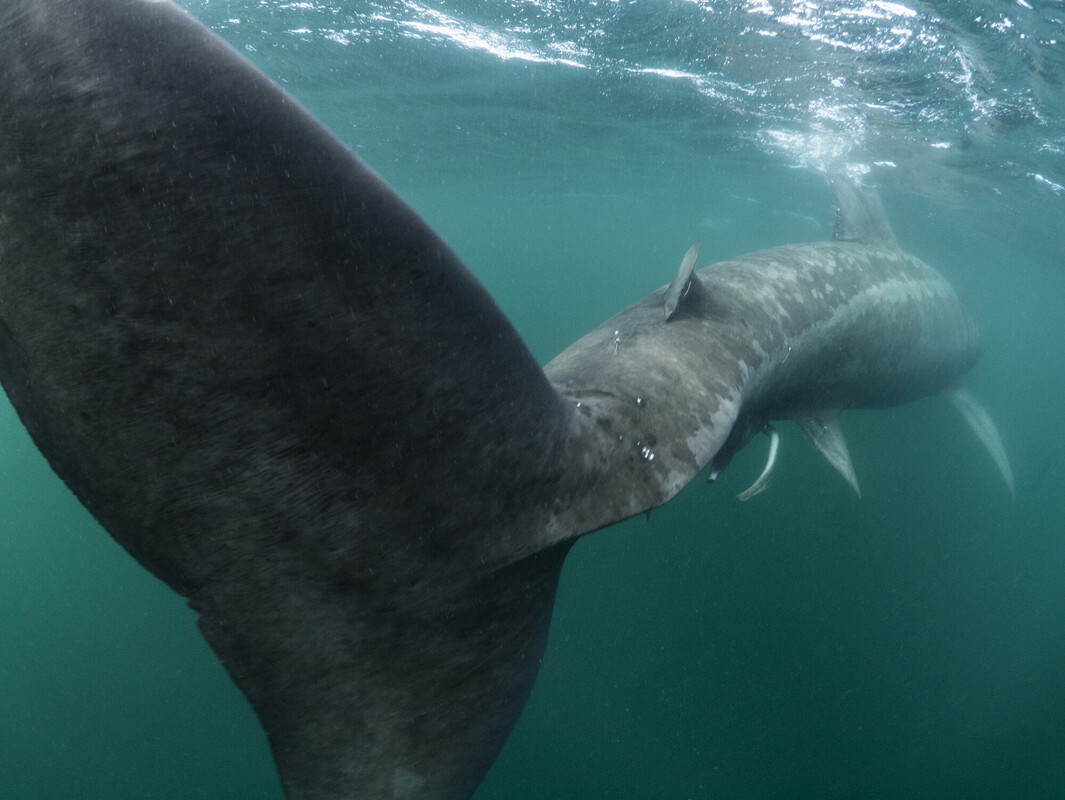Basking shark
Cetorhinus maximus



Basking sharks are the second largest fish in the ocean and the largest shark species able to breach (launch themselves out of the water). They are filter feeders and aggregate seasonally in productive plankton blooms. Feeding calmly at the surface, they often appear to be basking in the sun, hence their name.
Identification
Basking sharks are easily recognised by their large size (up to 12 m) and dark grey colour, lacking the spots of the whale shark. They are most often seen at the surface, their large dorsal fin pronounced, with tail and conical snout also usually visible. When feeding, their mouths gape wide open to filter plankton from the water through gill rakers. Their mouths are often white inside and clearly visible, giving feeding basking sharks a very distinctive look. Despite being filter feeders, they do also have very, very small (3–4 mm) teeth. It is thought these may be used for grip during mating.

Special behaviour
Aside from the distinctive basking behaviour while feeding at the surface, basking sharks are the largest species of shark to fully breach. Accelerating from depths of about 15 m, the sharks will reach 15–20 kmph before clearing the water. Many theories have been proposed, including parasite removal, but it is generally thought to be related to communication with other basking sharks.
Reproduction
Basking sharks are ovoviviparous, meaning they grow their embryos internally and nourish them from a yolk sack before giving birth to live, independent young. As with other sharks, they mate via internal fertilisation. In contrast to whale sharks, which can have litters of hundreds of pups, basking sharks are thought to produce only a few, larger pups (up to 2 m in length). Like many sharks, male and female basking sharks will live in different habitats when not coming together to mate. This sexual segregation is possibly due to differing physiological requirements and an avoidance of males when not mating. However, when they are ready to mate there is evidence that courtship involves extensive close following and circling around each other. Breeching may also play a role in signalling.
Habitat and geographical range
Basking sharks are present in temperate waters of both the northern and southern hemisphere. They are seasonally found in shallow coastal waters feeding on plankton but also migrate across ocean basins and perform deep dives, presumably to feed.

Diet
Basking sharks feed almost exclusively on zooplankton, which they filter out of the water using their gill rakers. The rakers essentially sieve the plankton out of the water passing over the gills then collect it up until there is enough for the shark to swallow. Unlike whale sharks, which can filter feed using suction, basking sharks must swim to force water through their gills.
Threats
While there is currently no targeted fishing for basking sharks (only basking shark bycatch), they have been victim to extensive overfishing in the past. They were targeted by harpoon and net fisheries for centuries, in particular for oil from their livers, which can make up 25% of their body weight – a substantial harvest from such a large animal.
Relationship with humans
Although the intense targeting of basking sharks has ceased, they are still caught as bycatch and used for their fins, meat, liver oil and leather. While there may be some cautious indications of recovery in the northeast Atlantic, global populations are still estimated to have declined by 50–79% over the past 100 years. As such, the basking shark remains categorised as Endangered, and is even one of the few shark species listed under Appendix II of CITES, which restricts its international trade. There is also an increasing intrigue and appreciation of basking sharks amongst tourists, and a growing market for responsible ecotourism, where operators are quite reliably able to offer customers close encounters with them.
Fun Facts
Basking sharks are the second largest fish, growing up to 12 m long and weighing more than 4 tonnes.
They quite regularly leap out of the water, perhaps signalling to potential mates.
They often feed in loose aggregations of up to 100 individuals, and genetic evidence suggests those feeding in proximity to each other may be more related.
They have the smallest brain to body ratio of any shark.
Only really seen in summer, they were once believed to hibernate during the cold winter months, however research has since revealed that they simply dived deeper.
References
David A. Ebert. et al, 2021, Sharks of the World: A Complete Guide.
IUCN Red List of Threatened Species, Basking shark: Cetorhinus maximum
Florida Museum, 2021, Cetorhinus maximum
Oceana, 2021, Basking shark: Cetorhinus maximum






